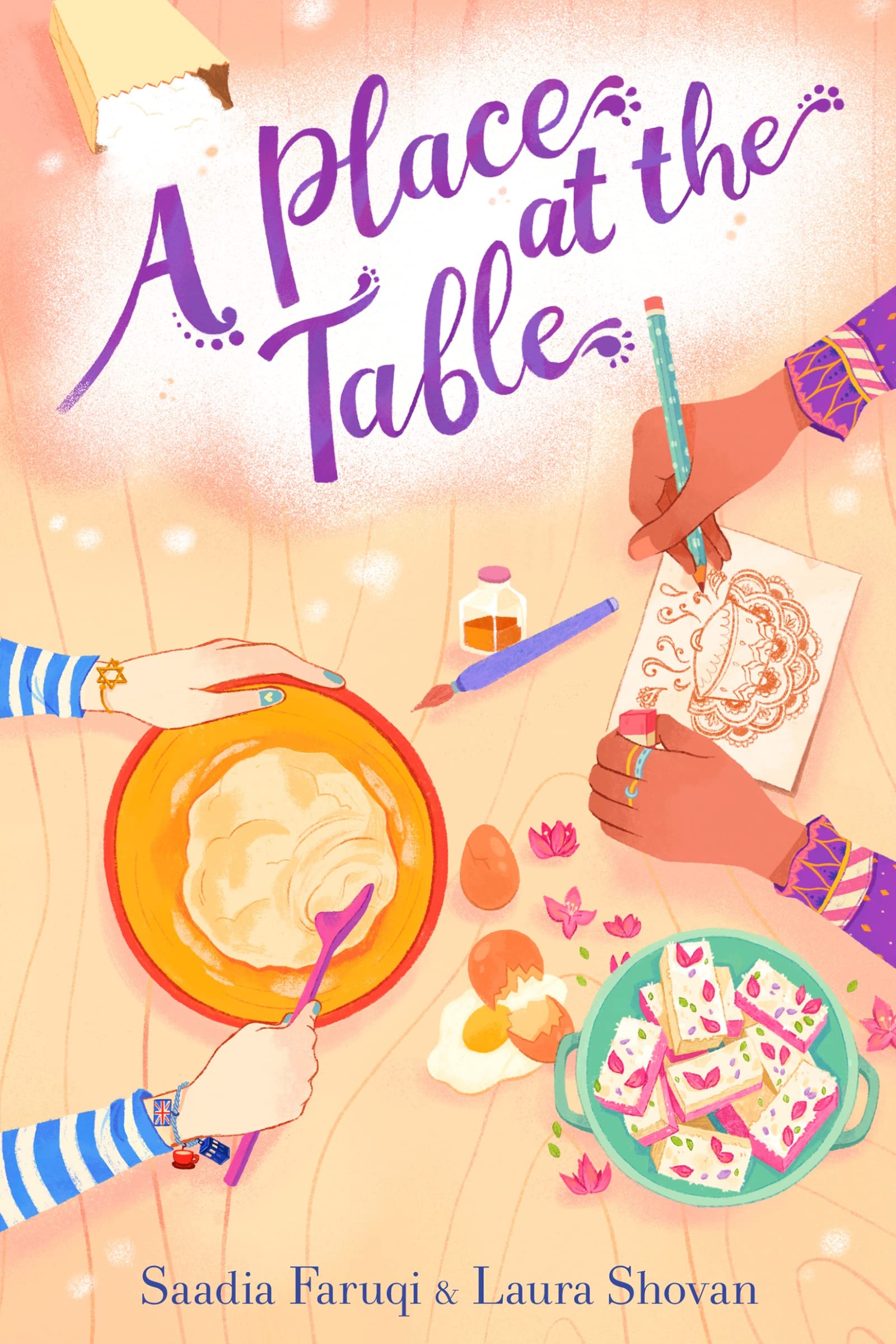By Saadia Faruqi Laura Shovan
In a South Asian cooking class, Sara and Elizabeth learn that some recipes don’t just create food; they create family.
Saadia Faruqi and Laura Shovan’s “A Place at the Table” is a heartfelt middle-grade novel that blends cultural exploration with themes of friendship and family resilience. Sixth graders Sara, a Pakistani American Muslim, and Elizabeth, a Jewish girl with a British-Indian mother, form an unlikely partnership in a South Asian cooking class taught by Sara’s mother. Sara reluctantly joins the class to support her mom’s struggling catering business, while Elizabeth hopes to reconnect with her emotionally distant mother through cooking. As the girls collaborate on a recipe for a televised competition, they navigate cultural misunderstandings, family pressures, and personal insecurities. The story sensitively tackles Sara’s fears about her mother’s citizenship exam and financial instability, alongside Elizabeth’s struggles with her mother’s depression and potential move to England.
This book is a standout choice for teaching SDG 2: Zero Hunger, particularly its focus on food accessibility and cultural equity. Sara’s family’s catering challenges and Elizabeth’s reliance on frozen meals subtly highlight how economic strain impacts food choices: a relatable entry point for discussing food insecurity with middle-grade readers. Educators can use the girls’ cooking partnership to explore how food bridges cultural divides while addressing systemic barriers to nutritious meals. TSara and Elizabeth’s evolving friendship exemplify being Open-minded and Caring. Their willingness to learn about each other’s traditions models cultural curiosity, while their support during family crises underscores empathy.
Try pairing the book with activities like creating a “community recipe channel” where students create videos sharing dishes tied to their heritage, or organizing a classroom food drive for a local community group. The story’s frank discussions about microaggressions (like “go back where you came from” comments) also offer opportunities for role-playing exercises on allyship. Faruqi and Shovan strike a balance between hope and realism, making this a valuable tool for fostering inclusive classrooms where students see their experiences reflected and feel empowered to address inequity.

